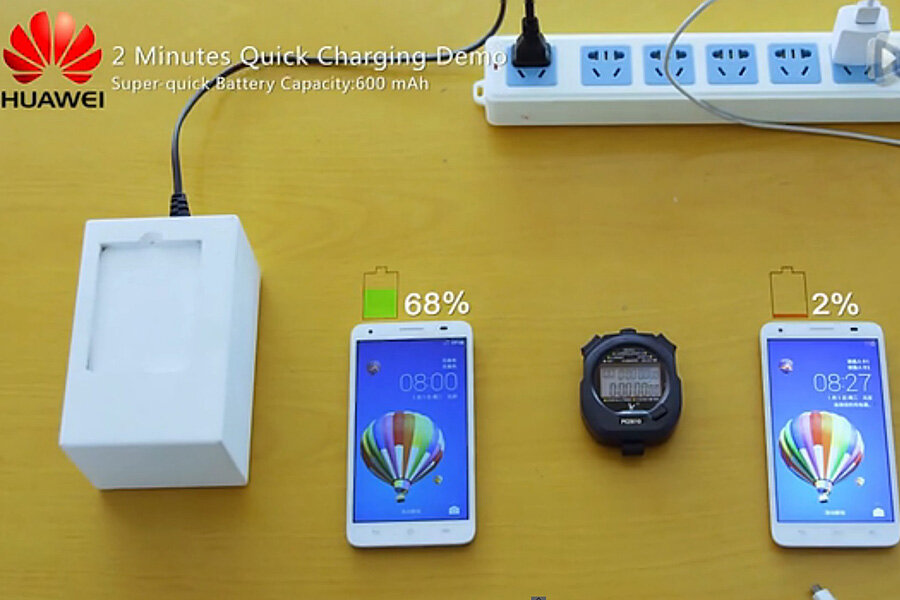Quick charge battery could charge smartphone 10 times faster
The Chinese tech giant Huawei has revealed two new quick-charging battery prototypes that could change the future of smartphones.
Most current smartphone batteries that claim quick charging actually reduce the battery capacity and lifespan. Most iPhone users can attest to this reduction in battery capacity the more they use their phone. But Huawei has designed a battery with a graphite-coated anode that will remove the negative (no pun intended) side effects, effectively offering a quick-charging battery that doesn’t lose capacity or longevity.
“Huawei says it used heteroatoms – atoms which are not carbon or hydrogen – which the firm claims can increase charging speeds without affecting the battery's overall lifespan,” reported the BBC. The term typically refers to atoms that are in a ring structure.
In a recent test, Huawei demonstrated a large 3,000 mAh (milliamp hour) battery, larger than the kind you’d find in a typical smartphone, could be charged to nearly 50 percent in just five minutes. In just two minutes, a smaller 600 mAh battery could charge to nearly 70 percent.
This development is a significant step forward, as battery life is one of the most “significant limiting factor[s]” for portable electronics. This technology could have applications in electric vehicles in the future, too, but for now Huawei seems to be focusing mainly on mobile devices. ZDnet reported Huawei’s goal is to “develop a battery that can reach a full charge during a coffee break.”
Huawei is just one of many working towards smartphone battery improvement.
Samsung batteries in the Galaxy S6 smartphones released in March can supply four hours of use after just ten minutes of charging. The phone also has wireless charging capabilities.
FlashBattery, created by StoreDot, claims to charge smartphone batteries in just one minute. Described as a “highly dense energy sponge,” the battery is made from synthesized organic compounds that “dramatically reduce charging time while increasing power capability.” This tech has not been adopted by any major smartphone manufacturer yet.
On a subreddit dedicated to the Huawei demo, commenters had mixed feelings. Some were encouraged by the quick charge. “Hold my back cover, I'm going in!” posted one user.
Others wondered if the tech would have environmental effects if batteries were disposed of more often, and still others questioned the legitimacy of charging speed.
“That's what I've never understood," one poster on Reddit wrote. "I remember a few years ago people were saying we should slow charge our phones to extend the battery's life. Now we all want Rapid Charging?”






